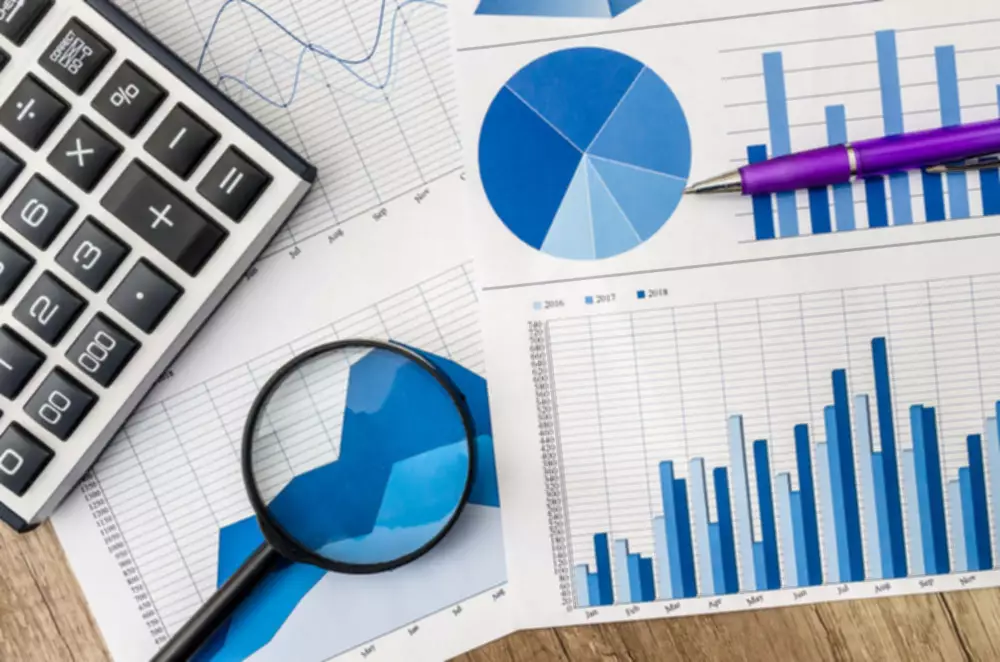Content

This is done in order to reconcile the difference between EBIT and EBT. Operating income looks at profit after deducting operating expenses such as wages, depreciation, and cost of goods sold. The first section, titled Revenue, indicates that Microsoft’s gross profit, or gross margin, for the fiscal year ending June 30, 2021, was $115.86 billion. It was arrived at by deducting the cost of revenue ($52.23 billion) from the total revenue ($168.09 billion) realized https://www.bookstime.com/ by the technology giant during this fiscal year. Just over 30% of Microsoft’s total sales went toward costs for revenue generation, while a similar figure for Walmart in its fiscal year 2021 was about 75% ($429 billion/$572.75 billion). To understand the above formula with some real numbers, let’s assume that a fictitious sports merchandise business, which additionally provides training, is reporting its income statement for a recent hypothetical quarter.
Is income statement same as profit and loss?
Profit and Loss (P&L) Statement
A P&L statement, often referred to as the income statement, is a financial statement that summarizes the revenues, costs, and expenses incurred during a specific period of time, usually a fiscal year or quarter.
It also helps you analyze whether performance metrics are improving. An income statement is one of the most common, and critical, of the financial statements you’re likely to encounter.
How to read an income statement
Marketing, advertising, and promotion expenses are often grouped together as they are similar expenses, all related to selling. Here’s the income statement for the first quarter of this year for a new local football association. Investopedia requires writers to use primary sources to support their work. These include white papers, government data, original reporting, and interviews with industry experts.

It includes revenue, expenses, gains, losses, and the resulting net income from the period the statement covers. In other words, the income statement helps you to understand whether your business has made a profit or a loss. This can give you an excellent insight into your firm’s financial health over a given period. The other two statements are the balance sheet, which shows a company’s assets and liabilities, and the cash flow statement, which shows how a company’s cash is managed and utilized. Some companies also publish a fourth statement known as shareholders’ equity, which shows debt and equity attributable to stockholders.
Reading Income Statements
Total revenue is the sum of both operating and nonoperating revenue, while total expenses include those incurred by primary and secondary activities. They are reported separately because this way users can better predict future cash flows – irregular items most likely will not recur. Revenue – Cash inflows or other enhancements of assets of an entity during a period from delivering or producing goods, rendering services, or other activities that constitute the entity’s ongoing major operations. It is usually presented as sales minus sales discounts, returns, and allowances.
- EBITEarnings before interest and tax refers to the company’s operating profit that is acquired after deducting all the expenses except the interest and tax expenses from the revenue.
- Knowledge gained will surely witness progress in my business adventure.
- This post is to be used for informational purposes only and does not constitute legal, business, or tax advice.
- Here’s how to put one together, how to read one, and why income statements are so important to running your business.
- Some organizations prefer to net these two line items together, so that only a net revenue figure is presented.
- ReinvestedReinvestment is the process of investing the returns received from investment in dividends, interests, or cash rewards to purchase additional shares and reinvesting the gains.
The most common periodic division is monthly , although certain companies may use a thirteen-period cycle. These periodic statements are aggregated into total values for quarterly and annual results.
How to Read Income Statement?
Every time a business sells a product or performs a service, it obtains revenue. Because of this, horizontal analysis is important to investors and analysts. By conducting a horizontal analysis, you can tell what’s been driving an organization’s financial performance over the years and spot trends and growth patterns, line item by line item. Ultimately, horizontal analysis is used to identify trends over time—comparisons from Q1 to Q2, for example—instead of revealing how individual line items relate to others. Horizontal analysis makes financial data and reporting consistent per generally accepted accounting principles .
The income statement is an overview of how a business is performing over a particular accounting period such as month, quarter or year. It indicates where income is coming from, where expenses arise while also showing the net profit or loss during the time period. Non-operating ExpensesNon operating expenses are those payments which have no relation with the principal business activities. These are the non-recurring items that appear in the company’s income statement, along with the regular business expenses. Net Operating IncomeNet Operating Income is a measure of profitability representing the amount earned from its core operations by deducting operating expenses from operating revenue. It excludes non-operating costs such as loss on sale of a capital asset, interest, tax expenses.
Meaning of income statement in English
Creating monthly reports can help you identify trends on a granular level and improve your profits/expenditures. And the cash flow statement, is one of the most important financial documents produced by your business. Find out everything you need to know about the format of an income statement with our comprehensive guide.
Income statements can also be used to make decisions about inorganic or organic growth, company strategies, and analyst consensus. Non-operating revenues are revenues that a company earns from activities that are not related to its primary business operations. These include dividend income, and proceeds from sale of extraordinary items. Profit, of course, is the motivation to conduct business in the first place. James is looking at the income statement, in the first place, to ensure the stability of company profit.
Income statement – Definition, Importance and Example
Essentially, any business costs that don’t relate to the cost of goods. Finally, using the drivers and assumptions prepared in the previous step, forecast future values for all the line items within the income statement. Forecast specific line items, and use these to calculate subtotals. For example, for future gross profit, it is better to forecast COGS and revenue and subtract them from each other, rather than to forecast income statement future gross profit directly. While not present in all income statements, EBITDA stands for Earnings before Interest, Tax, Depreciation, and Amortization. This statement is a great place to begin a financial model, as it requires the least amount of information from the balance sheet and cash flow statement. Thus, in terms of information, the income statement is a predecessor to the other two core statements.
For example, analyze the trend in sales to forecast sales growth, analyzing the COGS as a percentage of sales to forecast future COGS. Earnings per share are computed by dividing the net income figure by the number of weighted average shares outstanding. With 7.55 billion outstanding shares for Microsoft, its 2021 EPS came to $8.12 per share ($61.27 billion ÷ 7.55 billion). It indicates that Walmart incurred much higher cost than Microsoft to generate equivalent sales. James Chen, CMT is an expert trader, investment adviser, and global market strategist. He has authored books on technical analysis and foreign exchange trading published by John Wiley and Sons and served as a guest expert on CNBC, BloombergTV, Forbes, and Reuters among other financial media. Some numbers depend on accounting methods used (e.g., using FIFO or LIFO accounting to measure inventory level).
An income statement shows how effective the strategies set by the management at the beginning of an accounting period are. Financing cost incurred by a company is reflected as interest expense. An optional method of reporting this item is to deduct interest income from interest expenses before reporting the net. This can also be called the cost of services and is often referred to as COGS. For a company that has a production process; labour cost, direct overheads on manufacturing and raw materials will make up the cost of goods sold. For example, a departmental store will state the cost of goods sold as the value of purchases made less any unsold stock.


